A New Kind of Asian Grocer Has Arrived
AAPI entrepreneurs across the country are carving out their own niche with highly curated, artisanal food stores.
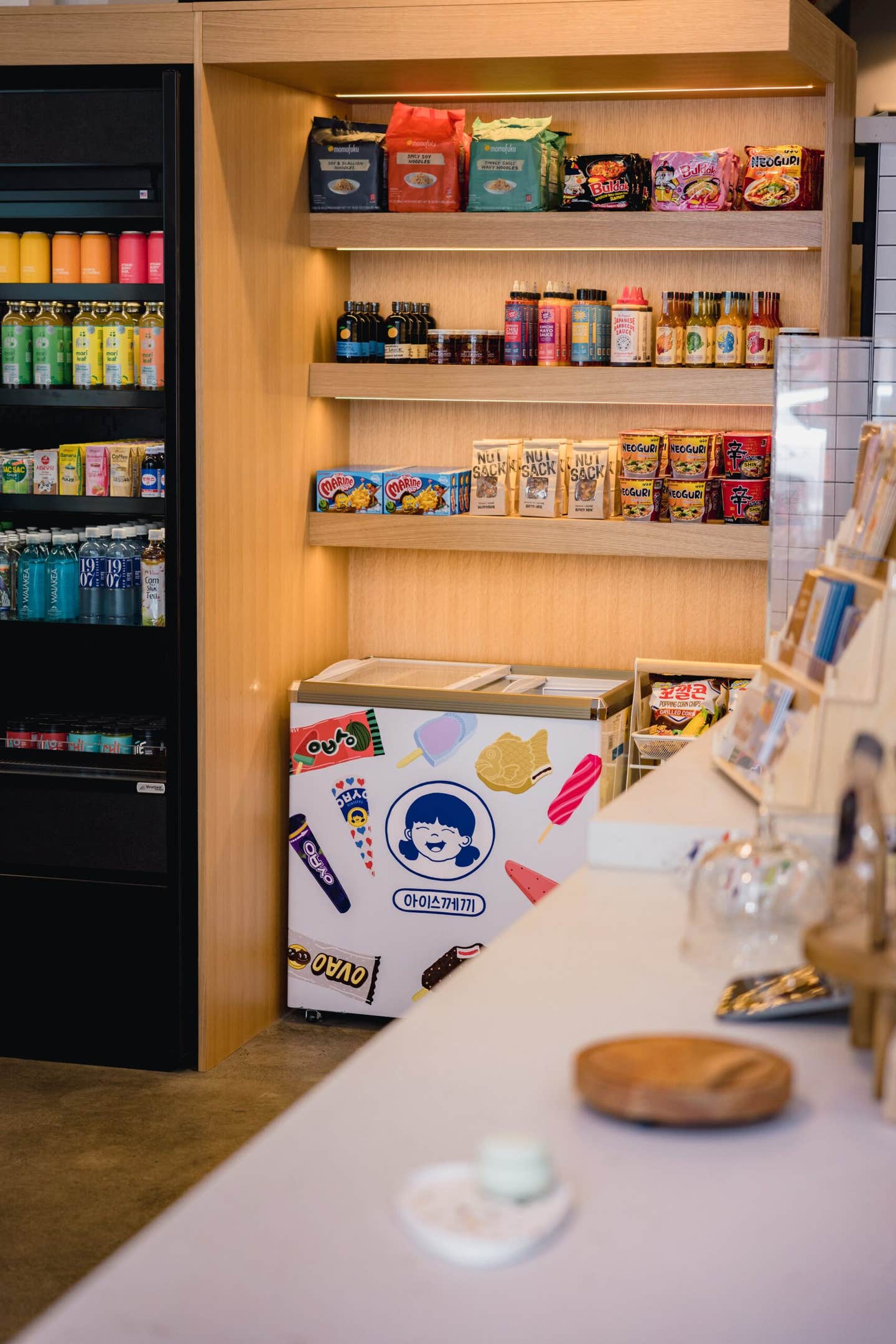
For years, Jing Gao dreamed of opening a grab-and-go market that serves prepared meals she would actually crave. Not hard-boiled eggs and cold sandwiches, but creamy sesame noodles, fiery mapo tofu, and crunchy wood-ear mushroom salad that channel the peppery, piquant flavors of her native Chengdu, capital of China’s Sichuan Province. Today, that vision no longer lives in her head, but on a high-trafficked shopping street in the heart of Los Angeles.
After dabbling in the fast-casual arena with her now-closed restaurant Baoism in Shanghai, Gao left food service and went on to launch a chili-crisp empire with Fly By Jing, her fast-growing direct-to-consumer brand of made-in-Sichuan sauces. She wasn’t eager to re-enter the hospitality realm, unless the right partner came along. Enter Stephanie Liu Hjelmeseth, a lifestyle blogger whose family previously owned the beloved Orange County restaurant Chong Qing Mei Wei. Both Gao and Liu grew up eating Sichuan dishes, and they both liked the casual convenience and accessibility of the grab-and-go framework, implemented profitably by brands like Pret a Manger. “How great would it be to apply modern Chinese flavors to that model?” Gao recalls thinking.
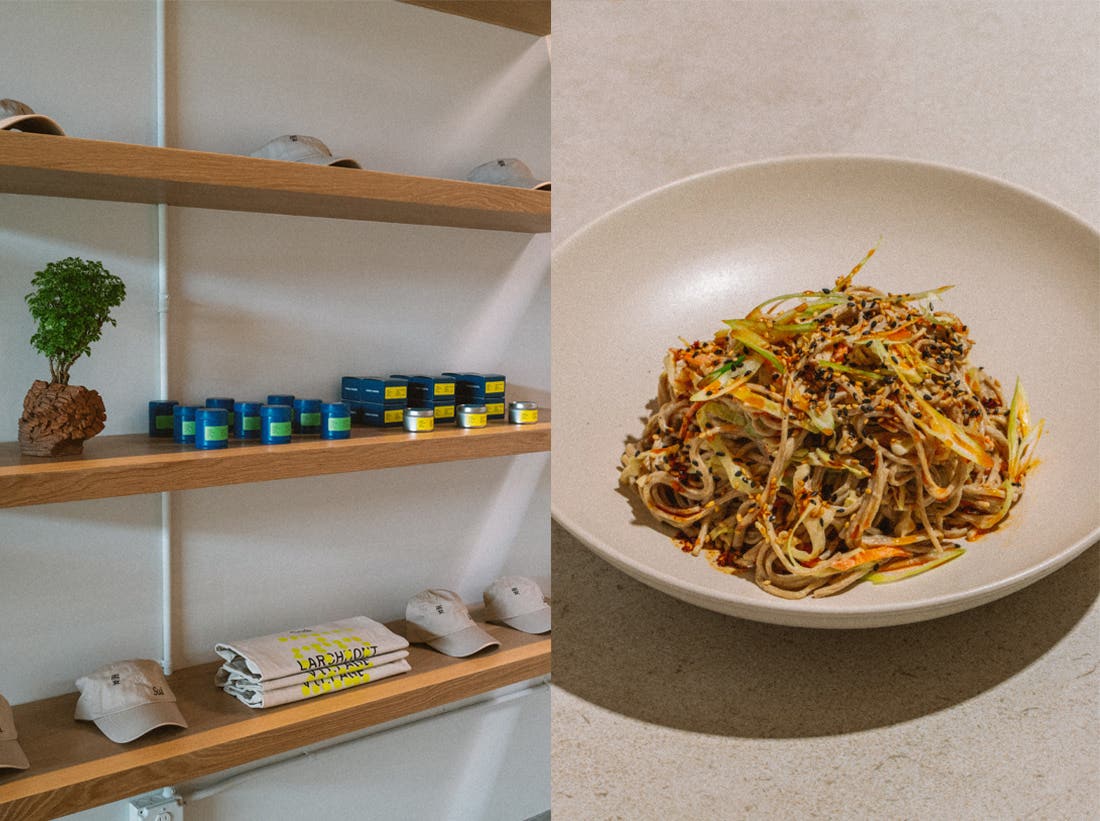
Suá Superette, which debuted last November, does just that by packaging familiar Sichuan flavors into conveniently portable meals, often yielding surprising combinations. At the new market, lazi ji, a fried-chicken specialty of Chongqing, has evolved into crispy tenders dipped in a spicy vinaigrette; cumin-scented beef is swaddled in a wrap for on-the-go enjoyment; zingy mala seasoning jazzes up fried lotus-root chips. “We wanted to combine the Sichuan flavors that we love with the context that we live in,” says Gao of meeting her customers—active, on-the-move Angelenos—where they are. Positioned as a one-stop shop, the brick-and-mortar also stocks a selection of Asian-inflected pantry staples like condiments from Cabi Foods, flower teas from The Qi, and instant packs of plant-based Immi Ramen. By demonstrating how Asian food can fit seamlessly into their clientele’s lives, the two entrepreneurs convey that the flavors of their heritage “are adaptable and versatile, and can be applied to so many canvases,” says Gao. (The message echoes that of Gao’s recent cookbook, The Book of Sichuan Chili Crisp, which shares both traditional and newfangled ways to use the region’s signature flavor profiles.)
Call them superettes, mini-marts, or corner stores: small independent grocers that acknowledge and speak to today’s Asian American (particularly East and Southeast Asian) experience are popping up around the country. These modern businesses are smaller, sleeker, and more specialized than their big-box chain counterparts like 99 Ranch, H-Mart, or Seafood City, and place a notable emphasis on craft, curation, and customer experience. And often, they’re founded by millennials who want to bring visibility to their communities, and bridge customers to those cultures through food.
At the Taiwanese market Yun Hai, which opened its Brooklyn brick-and-mortar in 2022, Tatung rice cookers and Kuai Kuai corn crisps sit alongside artisanal seasonings, condiments, and ceramics sourced directly from brewers, farmers, and craftspeople in Taiwan. Taiwanese-style terrazzo tiles line the floor, while wood paneling and warm colors evoke the feel of a traditional bodega one might find on the island. “We want you to feel like you're transported to a different place,” says Yun Hai co-owner Lillian Lin. “There are people who don’t know what Taiwan is, and we want to change that. But also, there are people who are familiar with Taiwan and don’t have a way to access that culture. ‘My grandma used to cook this, but I don’t know where to get it.’ Or they might not speak Mandarin.” Yun Hai provides bilingual labels as part of their effort to guide shoppers of all backgrounds.
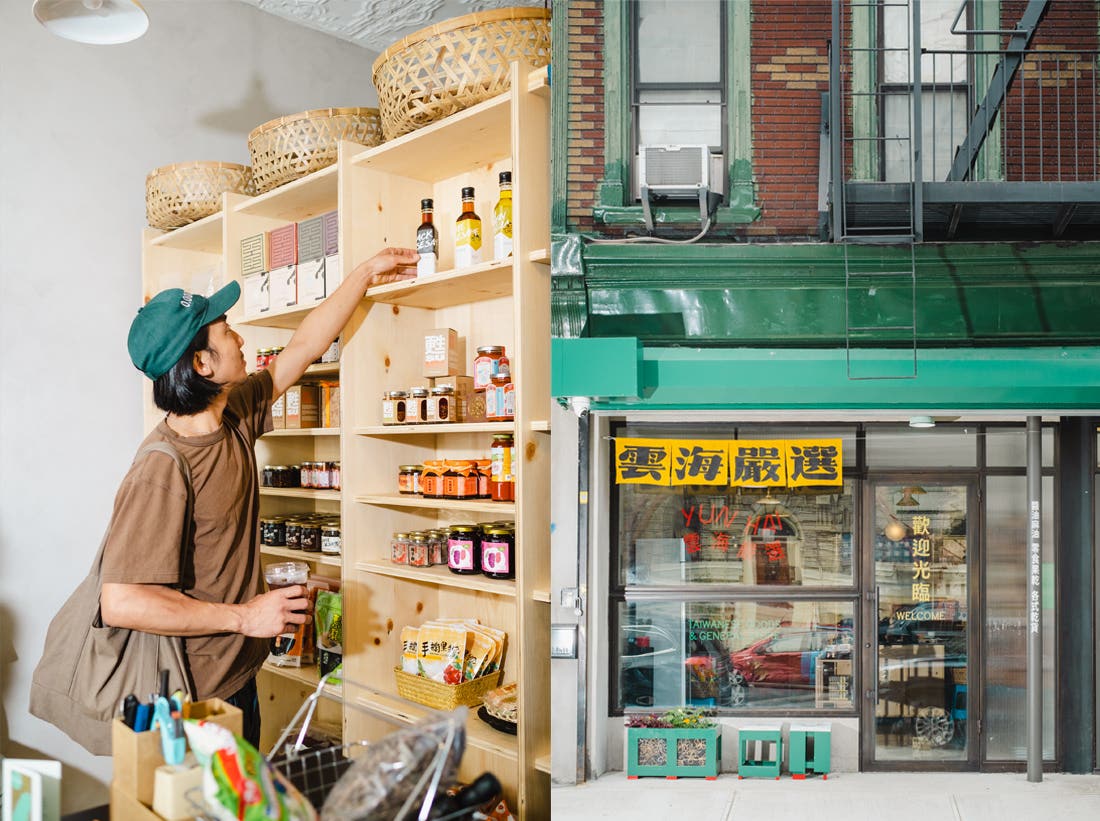
When first-generation immigrants in the U.S. opened some of the country’s earliest Asian supermarkets in the late-20th century, “they needed to make a living, and were trying to do something for their community,” says Vietnamese American author and cooking teacher Andrea Nguyen. Not only were those stores a lifeline for many immigrants, they also paved the way for greater availability and acceptance of Asian ingredients in the country. “Foods often have strong emotional and nostalgic ties,” explains Jane Matsumoto, director of culinary arts at the Japanese American Cultural & Community Center, which recently opened a mini-shop of its own called MISE. “Access to familiar foods facilitates social integration and helps create a sense of home and belonging in a new environment.” Like many Chinese Americans who grew up in the San Francisco Bay Area, I remember trailing my parents around Lion Market, a gateway to our heritage because it carried a seemingly comprehensive array of Chinese products—with affordable pricing to boot, though often without clear English translations—that Safeway and Albertsons didn’t: Chinkiang black vinegar, Sichuan peppercorns, precisely fileted cuts of meat for hot pot, and beyond.
One might consider Suá Superette and Yun Hai the descendants of those supermarkets, Nguyen observes. Building upon the foundation of cultural awareness and accessibility that big-box grocers fostered, modern mini-marts and bodegas represent the next generation of Asian ingredient purveyance in the U.S. More than an avenue for mere survival and support, these newer shops are outlets for owners to celebrate their heritage through carefully chosen products that not only tell the story of a community, but also uplift small makers from those backgrounds.
While Suá and Yun Hai respectively champion the flavors of Sichuan and Taiwanese cuisine, Yoboseyo! Superette, a micro-grocer and café in Los Angeles’ Little Tokyo, shines its spotlight on small-batch specialty goods from across the Asian American spectrum, with an emphasis on Korean-inspired products created by Korean American entrepreneurs. While waiting for a honey oat latte, on-the-go commuters and busy professionals can pick up gochujang-flavored party mixes from Chingoo Snacks, quinoa-based kimbap from GANCHIC, spiced nuts from Mommylas, and even dog treats from Little Ganshik. “The industry makes it so hard to get your product out there, to get it on the shelves,” says the mini-market’s co-owner Cindy Choi, who opened the shop in 2022 to “be a launchpad for them.”
Not far away in the city’s historic Chinatown, Sesame LA concentrates on pantry essentials and gourmet treats from small AAPI-owned brands with aesthetically crafted, giftable packaging. Chinese-inspired black sesame butter from Rooted Fare, seaweed snacks from Korean-owned brand Geem, and Vietnamese coffee blends from Little Green Cyclo “pay homage to their cultures by taking [something] classic and making it new, fun, and eye-catching,” says owner Linda Sivrican, who opened the shop in 2021, naming it after an ingredient she felt signified the common threads many Asian cultures share. “I spent a lot of my childhood visiting Chinatown every week with my parents,” she adds. “It was very nostalgic for me to come back and have this little space, 30 years later.”
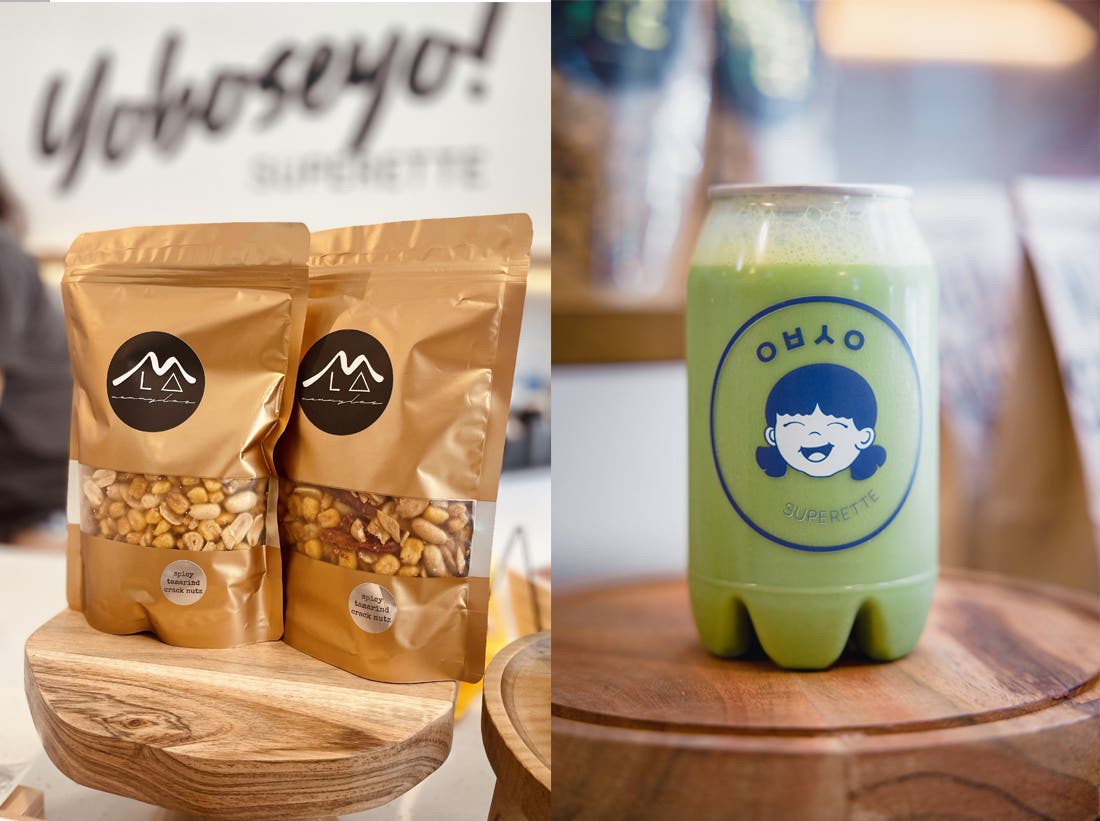
Both Choi and Sivrican chose to open their superettes in enclaves that have historically been havens for Asian communities. “In Little Tokyo, when you walk down the street, you see so many legacy businesses that have been there for 20, 30 years that are closing,” says Choi, pointing out that gentrification, rising real estate costs, and other challenges are displacing longtime establishments like Shabu-Shabu House and Suehiro Cafe. After Chinatown lost its last full-service Asian grocery store with the 2022 closure of Ai Hoa, Sivrican stocked fresh produce for a period of time so that local Asian growers could sell their harvests. By launching Sesame LA and Yoboseyo! in Chinatown and Little Tokyo (one of only three Japantowns left in the U.S.) respectively, the founders are waving a flag for the legacy of these communities as Asian hubs, while attracting a more diverse customer base to reinvigorate the neighborhoods. “There's a palpable sense of pride in these spaces,” remarks Los Angeles native and chef Tara Monsod, who helms the Filipino-inspired San Diego steakhouse ANIMAE. “Showcasing Asian culture becomes a unifying, connecting force.”
It’s clear community pride is a driving force behind the growing availability of artisanal Asian products—and the more tailored inventory at the shops that stock them. This new wave could help not only establish a premium for Asian foods, but also evolve how they are perceived. “One of the biggest barriers facing Chinese cuisine was this hierarchy of tastes—the fact that it's on the bottom rungs of that ladder of value that we ascribe to cuisines and different cultures, and their people,” Gao points out. Thoughtfully designed and aesthetically pleasing high-quality goods—with appropriate pricing to match—from what Gao calls “a rising tide of Asian-owned brands” are pushing back against the connotations of cheapness often associated with Asian food. “We are not a monolith, and we aren’t just mass-produced cheap products,” emphasizes Ji Hye Kim, the chef behind the restaurant Miss Kim in Ann Arbor, Michigan. “We are also local and crafted with care.” As disruptive entrepreneurs and discerning customers alike assign greater economic value to foods that spring from and represent their heritage, they’re sending a message: “We need to pay fairly for the labor, the ingredients, and the creativity that go into producing this food,” says Nguyen.
Suá Superette is, notably, not located in a particularly affordable L.A. neighborhood, nor one historically associated with Asian immigrants. Gao and Hjelmeseth decided to unveil their new venture in the walkable, boutique-lined Larchmont Village “to invite more people into the fold—because Asian flavors shouldn’t be relegated only to Chinatowns or 99 Ranches,” says Gao. Grab-and-go fare made with locally sourced ingredients echoes the priorities of busy, progressive urbanites, regardless of their heritage. “We’re seeing [Asian food] become part of cross-cultural intersectional living,” Nguyen tells me. “It’s not something that’s exotic that needs to be saved for a weekend trip. It can be everyday food as long as you love it, and anybody can love it.”
Interest in Asian cuisines is on the rise, as immigration, culinary television shows, social media, and tourism increasingly open portals to the continent’s foodways. “Whenever you go to a new country, food is always going to be the first gateway into that culture,” notes Arnold Byun, who co-founded MAUM Market, a pop-up showcasing food and crafts from Asian makers. “You might have a conversation about where the food came from, how it got there, what the country is known for. It just opens up so many conversations.”
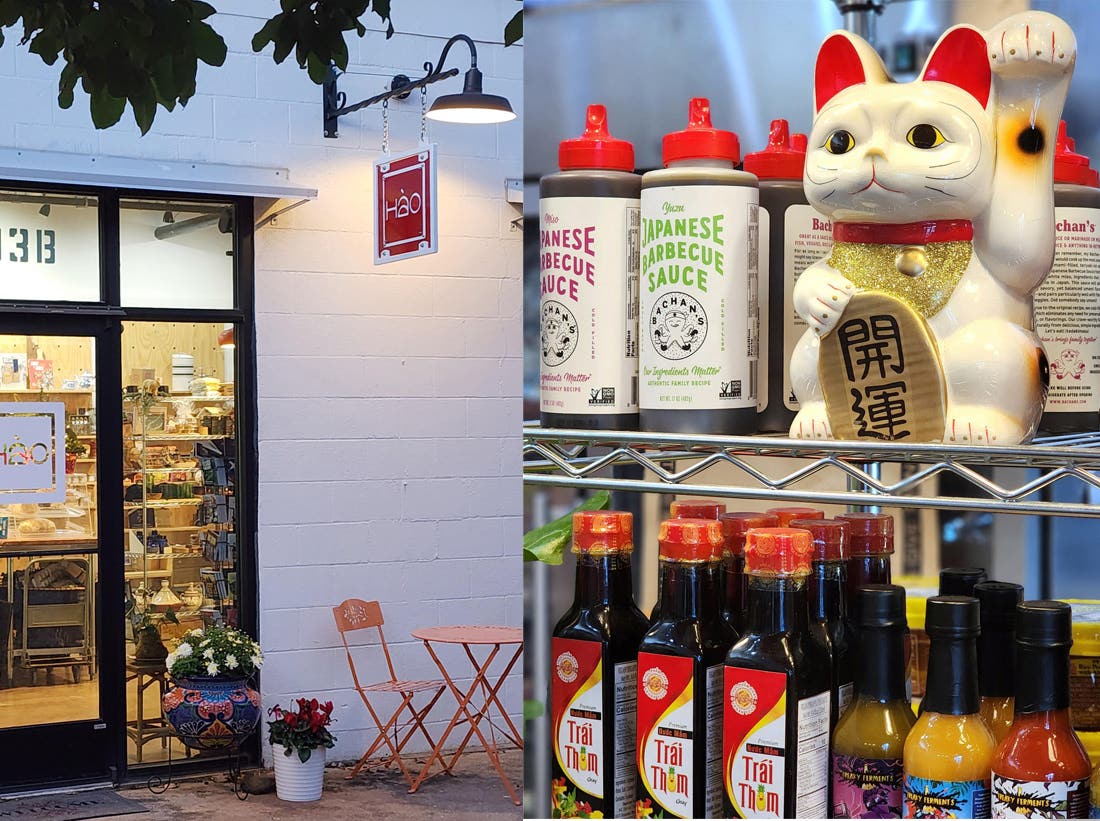
A compact store can be a more approachable entry point to having those conversations than a sprawling supermarket. For starters, “the smaller selection eliminates some of the overwhelm and decision paralysis you might feel in a big grocer,” notes food blogger and cookbook author Maggie Zhu. Moreover, attentive guidance from a trusted storekeeper can help customers navigate the nuances of cooking a cuisine that’s new to them. Fort Worth, Texas-based high-school culinary instructor Hao Tran streamlines the shopping experience at her mini-marketplace, Hao’s Grocery & Cafe, by assembling ready-to-cook kits—Maesri curry paste and locally grown vegetables for a cozy Thai green curry, or basmati rice and a medley of spices for a Southeast Indian biryani—that forge a bridge to different cuisines. “There are just very few Asian restaurants,” says Tran of the Fort Worth area. “It’s ingrained in me that the community I live in is short of these food experiences.” To fill in those gaps, she’s approached local farmers and asked them for help growing ingredients like daikon, Napa cabbage, and bittermelon. The benefit of a small, intimate store, she explains, is that she can actively engage with shoppers and teach them how to use these ingredients if they’re unfamiliar. “For customers, it’s not as intimidating if you know you can ask, ‘what do I do with this?’ or ‘how do I do this?’” notes Tran, who often fields follow-up queries from patrons over the phone. “That personal connection is more important than ever.”
Though superettes are a fast-growing sector, they’re only part of a larger, ever-expanding network of Asian ingredient supply and distribution in the U.S. Online retailers like Sarap Now, Weee!, and Umamicart are further broadening the reach of Asian flavors by bringing them to people’s doorsteps. Mass-market grocers like Nijiya Market, Mitsuwa Marketplace, and H-Mart continue to expand. As demand for the continent’s ingredients rises, and as supply-chain advances reduce barriers to importing from overseas artisans, says Matsumoto, the availability and footprint of Asian food products in the U.S. will only continue to grow. The more diverse the shopping avenues, the better, she adds. Big-box retailers, with their cooking appliances, live seafood, and wide selection of fresh produce and meat, “cater to a broader customer base with diverse needs,” Matsumoto notes. On the other hand, “niche markets can excel in providing a deeply immersive experience that highlights the cultural nuances of specific Asian regions.”
Where curated mini-marts arguably excel most is how they unapologetically magnify the nuanced, culturally blended Asian American experience of today, which is characterized by both Asian tradition and American lifestyle. Recalling his childhood, Byun says that he “didn’t know if I was Korean enough, or if I was American enough.” Most of these new superettes were dreamed up by first- and second-generation Asian Americans who felt similarly: they wanted to see themselves represented, their tastes catered to, and their flavors amplified.
“These stores are neither this nor that,” he says. “They celebrate the in-between.”
Recipes
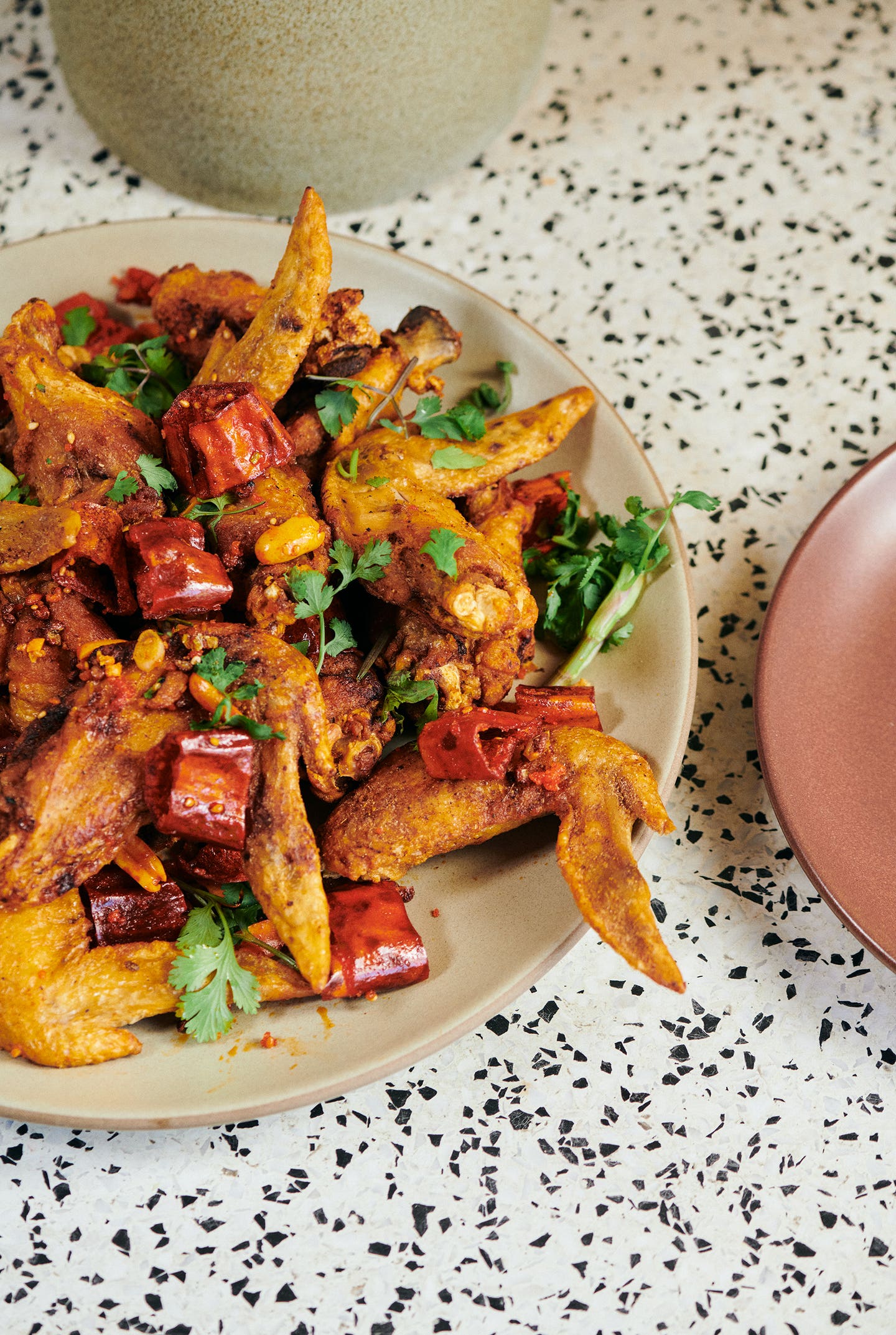

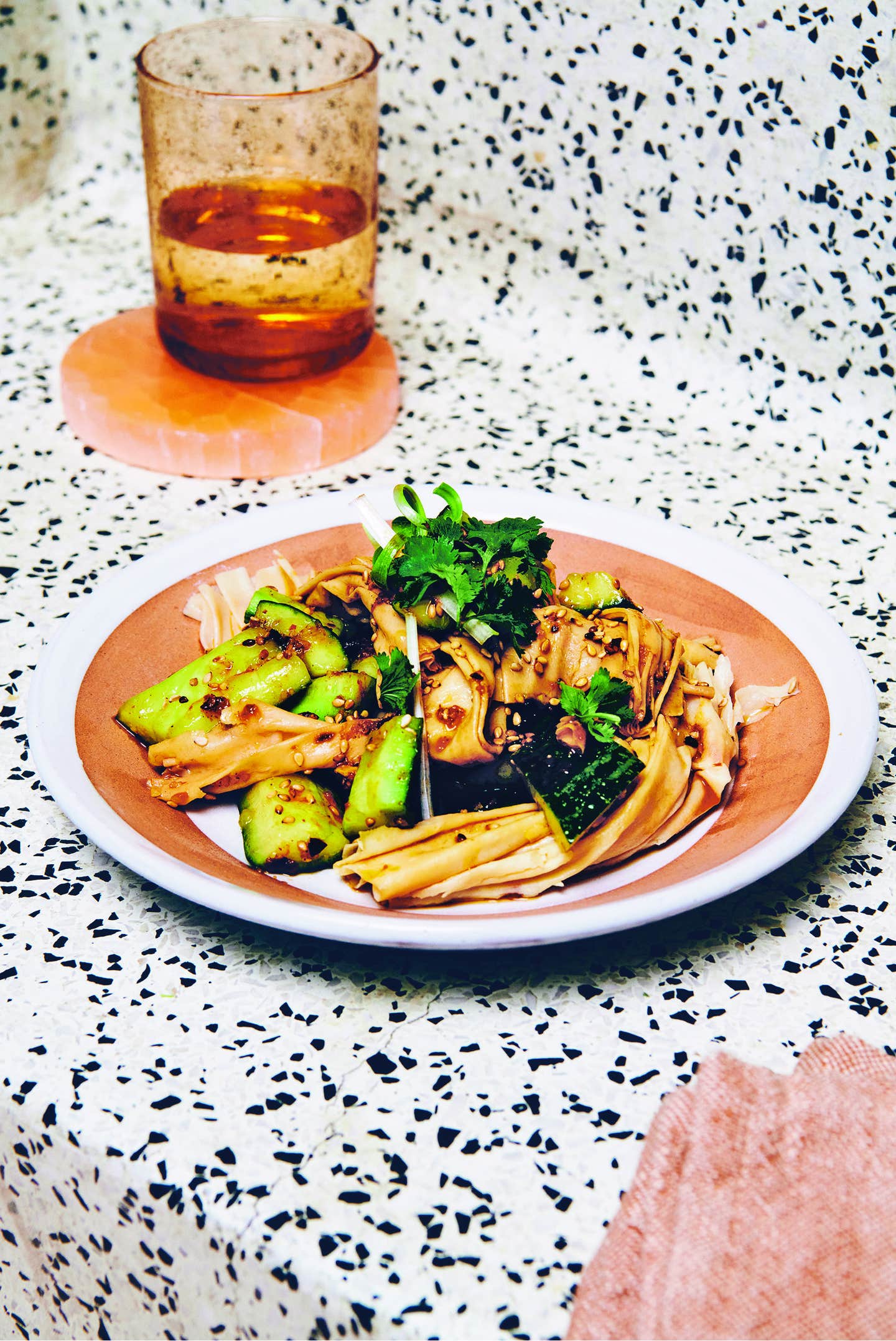
Keep Reading
Continue to Next Story










